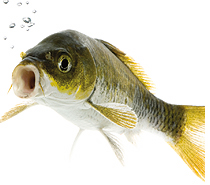By Beth Bacheldor
Biologists with the U.S. Department of Commerce’s National Oceanic and Atmospheric Administration (NOAA) and Western Washington University want to know how many rockfish are in the waters just off the coast of Washington state, so they can determine where to allow fishing. Now, thanks to an innovative RFID system that can track fish in the sea, they’re hoping to learn the answer.
“Using RFID in the ocean has generally been viewed as impossible,” says Warren Leach, president of Oregon RFID, the systems integrator that designed the system. That’s because the full-duplex RFID tags, which have been used for years to track salmon and other fish in fresh water, have a short read range, and that’s further reduced by salt water. While fish in rivers and streams swim close enough to RFID interrogators so their tags can be read, that’s unlikely to happen in a marine environment.
The biologists plan to tag 100 rockfish with half-duplex RFID tags encased in glass that have a read range of about 1.20 meters, or 3 feet 11 inches. A custom-developed half-duplex interrogator will be affixed to a bait station deployed 60 feet under the sea.
The new RFID system could open doors for tracking the movement of other marine life. “When you are trying to estimate how many fish are out there, you need to know how many are born—and how many die—each year, but you also need to know how much movement there is within a population,” says Kelly Andrews, an NOAA biologist. “In order to get that movement information, we need to be able to follow where fish go, and at least detect them in certain places.”


